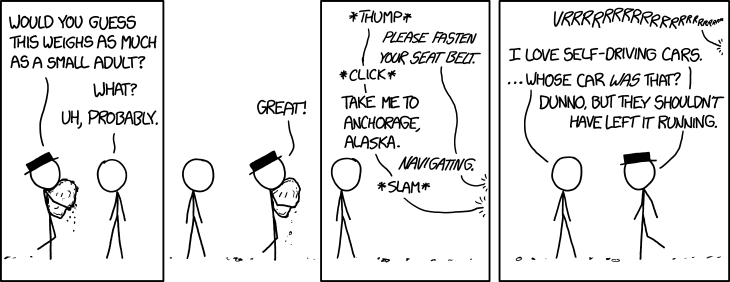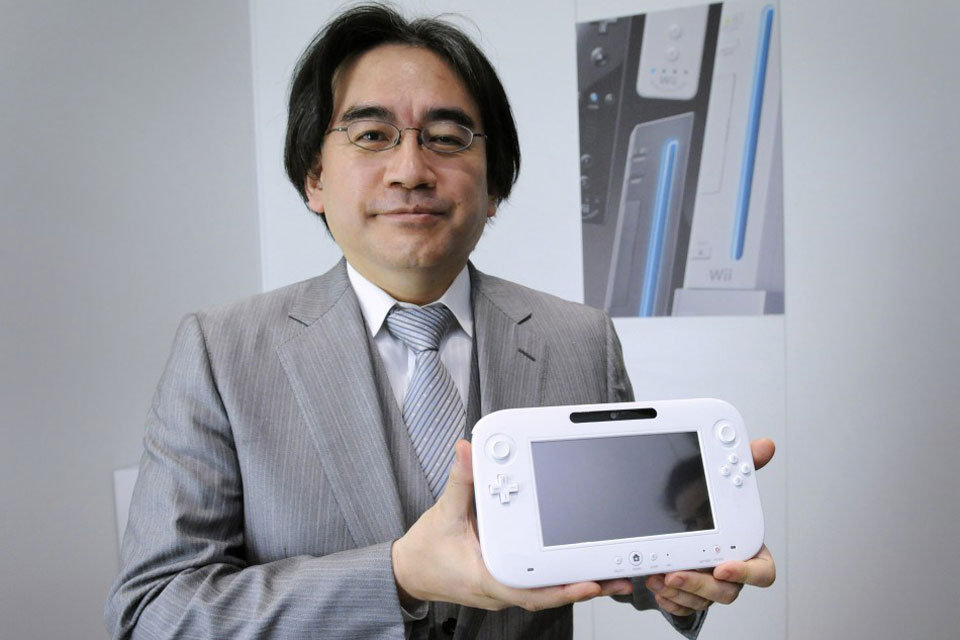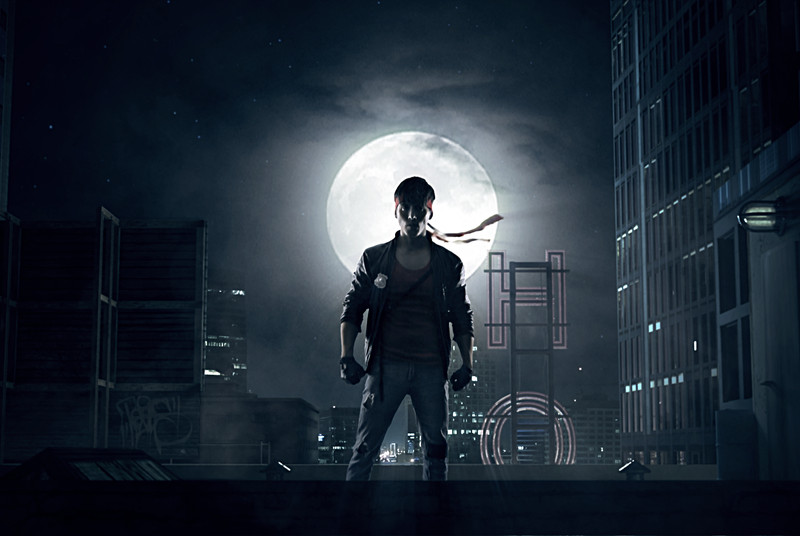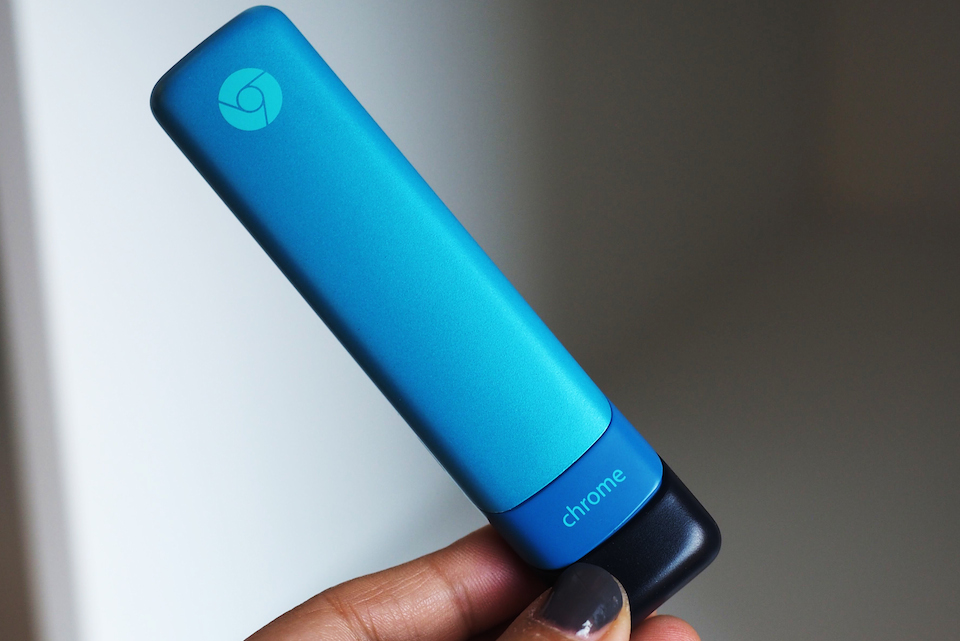
Every Android phone has always been a little compromised, and everybody knows it. There's been a veil of bullshit between you and what Google intended on all of them.
Sometimes that veil looks like ugly, bad, and usually unnecessary extra software. Sometimes it looks like a carrier failing to send out timely software updates. Other times it means getting something inexpensive, but fundamentally flawed in some way. Even the Nexus phones were behind the veil, little more than reference designs with hardware that was mostly determined by a third party before Google made tweaks here and there.
A pessimist would call this situation "fragmentation," an optimist would call it "diversity." Either way, it hasn't really been a huge problem for Google yet. Google wanted people to use its services, and the Android platform was flexible and ubiquitous enough to thrive and take over the planet, achieving dominant marketshare.
Just because Android is everywhere doesn't mean that Google is everywhere on mobile. There has been a lot of talk about Google being more "opinionated" about what a phone should be, and Google's opinion has always been hidden behind that veil. That situation might be okay at the low end, but at the high end (where all the profit and mindshare is), Samsung and Apple have expressed the only opinions that really matter. With Note 7s off the market and Samsung hedging its bets against Google's services, that situation was going to become untenable someday.
Someday is today: Google is making a phone for the first time. It's called the Pixel and it’s a Google phone inside and out, sold directly by the company to a mass audience for the first time. With Pixel, we finally get to see behind the veil and get an unmediated experience of Google's very best shot at a phone. All the excuses that existed before for Android phones not living up to their potential won’t work here.
No more bullshit.
There are actually two Pixels: the regular 5-inch screen version and a larger 5.5-inch version called the Pixel XL. They are identical in every respect except for the size of their batteries, the resolution of their screens, and, of course, their prices: the spectrum ranges from $649 for a 32GB Pixel and goes all the way up to $869 for a 128GB Pixel XL.
For people who have been following Google's phone efforts so far, the best comparison we have are the Nexus phones spanning the past six years. That comparison has led many to experience sticker shock about the price, because Nexus phones were usually inexpensive. But the Pixel is different: although it is manufactured by HTC, it's fully designed by Google. And Google designed it to compete at the top tier, so it's priced to match the iPhone and the Galaxy S7. It has a couple incredibly obvious objectives in mind with this phone: make it familiar and make it powerful.
Let's start with familiar and say the obvious thing: the Pixel kind of looks like an iPhone. Every high-end phone these days is designed with some combination of metal and glass, and so you could argue that there are only so many ways to make a rectangle. But even so, look at the bezels on the front, the curves at the corners, the antenna lines, and the placement of the speaker; the thing looks very familiar. After years of trying, Samsung managed to find its own, techier aesthetic. Maybe Google will do that eventually, but for this first try I think it wants the thing to look like what what people are used to. People are used to iPhones.
/cdn0.vox-cdn.com/uploads/chorus_asset/file/7291243/google-pixel-phone-7885.0.jpg)
/cdn0.vox-cdn.com/uploads/chorus_asset/file/7291233/google-pixel-phone-8829.0.jpg)
/cdn0.vox-cdn.com/uploads/chorus_asset/file/7291249/google-pixel-phone-8853.0.jpg)
/cdn0.vox-cdn.com/uploads/chorus_asset/file/7291257/google-pixel-phone-7814_crop.0.jpg)
That said, there are lot of differences, and they add up to a phone that's utilitarian and approachable. The biggest design element is the glass shade that replaces the metal on the top third of the back of the phone. Functionally, it might help with radio reception, but mostly I think it's there to align the phone in your hand.
Neither Pixel is precisely flat, there's a subtle wedge shape to them to accommodate the camera at the top. That means there’s no camera bump but also that they still feel relatively thin where you actually hold them — on the bottom half. On the front, it's easy to kvetch about the large bezel on the bottom, but I don't mind it; it makes the phone feel balanced and it's more comfortable to hit the on-screen home button.
Google puts the fingerprint sensor on the back, and I really like having it there. It's a hassle when the phone is sitting on a table, but I usually pick up my phone to interact with it anyway. You can just rest your finger on it to turn on and unlock the phone, but it doesn't serve as a home button. You can also set it up so that when you slide your finger down on it, it pulls down the notification shade.
The Pixel is not waterproof, which is dumb and annoying. I should also note that a very short fall managed to crack the screen on the smaller Pixel during our review. A sample size of one is obviously too small to say that these devices are less durable than they ought to be, but it's not a great sign.
It fast charges via USB-C and there's only one speaker — at the bottom. Luckily, it's a pretty loud, decent speaker (a charitable person might say that’s why the bezel on the bottom is so large). There is, of course, a headphone jack on the top.
/cdn0.vox-cdn.com/uploads/chorus_asset/file/7291285/google-pixel-phone-7783.0.jpg)
These are easily the best Android phones you can buy
As for specs: they're great. Both Pixel variants have a Qualcomm Snapdragon 821 processor, 4 gigs of RAM, and flat-out gorgeous OLED screens with deep blacks and vibrant, punchy colors. And that’s important: at some point next month, Daydream VR will finally get released and you'll want high-quality screens for that.
The Pixels are fast — noticeably faster than Samsung's Galaxy S7. On performance alone, these are easily the best Android phones you can buy. For a phone made by Google, that's absolutely the expectation — it's just good to note that at its first time at bat, Google hit a home run.
For the first time, Google is arguing strenuously that it can make a better phone because it controls both the hardware and software. So I wouldn't enjoy being another Android manufacturer right now. That's not my problem nor yours, though. For us, the really important question is simply this: did Google take advantage of that integration to push the Pixel beyond what has been possible on other Android phones.
I'd say that the answer is yes. Google tells me that once again it did more work optimizing touch response to make the phone feel snappier. In fact, the company claims that under a high-speed camera it's exactly as responsive as an iPhone. It doesn't quite feel that way to me, but perhaps the differences come down to how the different operating systems tune their inertia on scrolling.
I also think that Google was able to optimize battery life beyond what other Android phones can do. Over the week and a half I tested the phones, I got absolutely stupendous battery life, especially on the Pixel XL. Last Sunday I streamed two hours of the Vikings-Texans game, used the phone throughout the day, and obsessively scrolled Twitter during the presidential debate. At the end of the day I was still at 30 percent.
In my experience, the Pixels are lasting a couple of hours longer than comparably sized iPhones or Nexuses. That’s better than the "about a day" you get from most phones these days, and it’s so good that I’m a little worried that it won’t last or my results are an outlier. So I’ll note that two other reviewers I spoke with were less pleased with the battery life on the smaller Pixel. If you care about battery life, definitely get the XL. It feels much smaller than the iPhone 7 Plus, too.
/cdn0.vox-cdn.com/uploads/chorus_asset/file/7290555/google-pixel-phone-8393.jpg)
Besides the battery, Google says the other hardware component that benefits the most from Google’s assembly integration is the Pixel camera. The camera on the back is 12.3 megapixels with an f2.0 lens and two ways to focus: phase detect and laser auto focus. It has a two-tone flash, too, but unfortunately no optical image stabilization. Google product VP Brian Rakowski calls this "the best smartphone camera anyone has ever made." Usually you don't hear such bold claims, but he's confident — DxOMark gave it the highest score it's ever given a phone.
But benchmarks are one thing, results are very much another. Luckily for Google, the results on the Pixel are very, very good. I put it in the same ballpark as the iPhone 7 and the Galaxy S7 in most situations, which is not something I expected to say going in.
The Pixel bested the iPhone in picking up detail and color in my test shots. To my eyes, it seems to be making more pleasing decisions with lighting and HDR, too. I want to put the emphasis on "more pleasing," because my hunch is that if we looked at the raw input each sensor is getting we'd be hard-pressed to tell the difference. Instead, the distinctions between all three of these phone cameras are more about the stylistic decisions each company is making. Both Google and Samsung are slightly more aggressive at processing the image into something pleasing, while the iPhone seems to give a more natural look.
It matches or beats the iPhone 7 and the Galaxy S7 Edge
/cdn0.vox-cdn.com/uploads/chorus_asset/file/7291307/google-pixel-phone-8422.0.jpg)
But for me, the most important thing is that Google seems to have finally fixed my biggest gripe about most Android cameras: the speed. The camera app opens fast and takes pictures immediately. Google also has figured out a way to make HDR feel fast — the camera defaults to HDR auto and though sometimes it takes a couple of seconds to process the HDR image, it happens in the background, freeing you to take more shots. You can manually turn on HDR+ mode, which forces the camera to take a higher quality HDR shot and slows things down a bit.
Holding your finger down on the shutter button takes burst photos, and the Google Photos app will pick the best one for you and also automatically make a little GIF animation of your shots. If you like custom camera controls, there's good news and bad news. The good news is that you have easy access to AF/AE Lock by holding your finger down on the screen, and dragging your finger up and down adjusts exposure. The less good news is that the camera defaults to HDR Auto every time you open it — even if you turned HDR off the last time you used it.
Google did add some video stabilization software that ties the camera sensor to the gyroscope. It can stabilize what you're shooting as long as you don't shake the camera too much. Walking down a wooded path: fine, the results are stable and don't have a "jelly" effect, though the video does look vaguely artificial to me. Running down that path: less fine, this isn't going to save you from shaky video if you really jostle it.
Bottom line: if you wanted to agree with Google and call this the best smartphone camera, I wouldn't argue with you. Instead I would say that picking the best camera among the Pixel, the iPhone 7, and the Samsung Galaxy S7 is more a matter of personal preference than it is of pure picture quality. And I would add that I don't think Google would have gotten this far if it hadn't controlled both the hardware and the software from the start.
/cdn0.vox-cdn.com/uploads/chorus_asset/file/7290693/google-pixel-phone-7860.jpg)
So Google has made a great phone that can compete at the high end. But that's really not enough reason for it to exist — at least not for a company like Google. Instead, the real reason the Pixel exists is to be the flagship platform for the Google Assistant.
You launch the Assistant by long-pressing the home button and then talking, just like Siri on the iPhone. You can also say "OK Google," but (as always) that's a little less reliable for me. What's remarkably reliable is the Assistant's ability to understand what I'm asking: it gets it right almost every time, in all sorts of noise environments, and even when my data connection isn't very good.
The Assistant shows up in a chat-like interface that slides up from the bottom. You pose your question, Google answers it, and then you can ask follow-up questions either by speaking or tapping a suggested reply.
There's a lot riding on the Assistant being good. When he announced the Pixel, CEO Sundar Pichai envisioned creating a personal Google for each person. In order to make that happen, the company is going to need to keep collecting and analyzing a lot of data to make that happen. So the tradeoff has to be that you get a massive benefit from using the Assistant.
I can't judge for you whether it's a good idea to continue to let Google know so much about you — including location, web and search history, and whatever is on your screen when you launch the Assistant — but I can tell you if the Assistant is any good. Short answer: it is. But it still lives in a weird world of functionality. Sometimes it amazes you with what it can figure out and sometimes it also baffles you when it can’t answer seemingly obvious questions.
/cdn0.vox-cdn.com/uploads/chorus_asset/file/7291361/google-pixel-phone-8793.0.jpg)
/cdn0.vox-cdn.com/uploads/chorus_asset/file/7291363/google-pixel-phone-8768.0.jpg)
When you ask the Assistant for information that can be culled from the web, it's impressively, sometimes ridiculously, smart. It can read the screen and then tell you who the cast is for the TV show you're reading about — then understand follow-up questions about someone like Lee Pace (who is a national treasure). The Assistant can read back relevant sections of how-to articles, complete with spoken sourcing.
In general it's less likely to frustrate you enough to stop using it like Siri, but it's not radically better. For example, it can tell me when the next debates are but it's not smart enough to understand its own answer has enough information to add it to my calendar.
It also doesn't (yet) talk to as many apps and services as Siri does. I've successfully made dinner reservations with OpenTable but it can't call an Uber. Google says it's been working to create an "Actions" system that makes those integrations easier for the user than it is on, say, Amazon's Alexa. That system won't arrive until December, unfortunately.
Meanwhile the Assistant is also able to do most of the basic phone stuff you'd expect: make calls, send texts, adjust screen brightness, and so on. It also has a daily briefing feature that will tell you the weather, your next appointment, and play some news from sources like NPR, the BBC, and Fox.
The Google Assistant is the smartest there is, but it's not a genius
That daily briefing is similar to the Flash Briefing, a feature I use with Amazon’s Alexa every day, and I love it. It's also the perfect example of the Assistant's as-yet unrealized promise: for as much as Google knows about me, it's not using all that information effectively yet. See, my most important Google calendar is on my work Google account, and the Assistant doesn't include that in the briefing. If I explicitly ask about my next appointment, it can find it, but it doesn't include it in my daily briefing.
There is one place where Google knows a lot about me and its Assistant returns amazing results: Google Photos. I’ve asked it for whiteboards, pictures of my cat, pictures of my kitchen, pictures of my friends who I don’t ever remember tagging, selfies, locations, and more. Every time Google finds the pictures. It’s way more accurate and comprehensive than iOS and Siri.
Even though there's ostensibly One Google Brain behind all of it, the different lobes don't always seem to be talking to each other. That confusion extends to the various ways that Google exists on the Pixel itself. You can only speak to the Assistant, for example, not type at it. Except that you can type at it in Allo, Google's chat app. You can also tap the Google search button on the home screen to type queries, but that's not technically the Assistant. Oh, and Google Now, the predictive information stream, still sits to the left of your main home screen.
That's four different ways to talk to Google on this phone, not counting apps like Maps and Gmail. And each one has a slightly different interface and provides slightly different results. For example, the Assistant can’t recognize songs yet, but asking the exact same question with the Google search button works fine.
To be very clear: the Google Assistant is absolutely the smartest of the assistant bunch, but it's not yet in a class of its own. Google knows so much more about me than, say, Apple, and its assistant should reflect that. Because Google itself is placing so much emphasis on the Assistant, it should be held to a higher standard than all the rest — and there's clearly still some work to do.
/cdn0.vox-cdn.com/uploads/chorus_asset/file/7290699/google-pixel-phone-8297.jpg)
Since we're getting into the business of holding the Pixel to a higher standard, let's also do that with Android. In general, the persistent knock on Android is that its third-party apps are slightly worse than on iOS and that it can often feel slower or "jankier." I think that these arguments still have some merit, but not as much as the conventional wisdom would have you believe. I find Android Nougat to be comprehensible and powerful, but it still has some annoying spots.
The phones ship with version 7.1 of Android Nougat, with a few Pixel-specific features. The one you'll notice right away is a custom launcher with round icons and a new swipe-up gesture to get to the app drawer. I like it — but then I am the guy who was already using a third-party launcher with a custom icon theme to begin with. You can also long-press on icons to get shortcut options, and the neat trick with them is you can drag any of those shortcuts out and make it a top-level icon in your launcher. There are also some nice Live Wallpapers that change based on your location, time of day, or even your battery level.
/cdn0.vox-cdn.com/uploads/chorus_asset/file/7291441/Screenshot_20161017-103723.0.png)
/cdn0.vox-cdn.com/uploads/chorus_asset/file/7291437/Screenshot_20161017-103647.0.png)
Google is also providing some bonus features for Pixel users. There's chat and phone support built right into the Settings app on the phone. If you like, you can give screen-viewing capabilities to your support representative so they can walk you through your issue. You also get free, unlimited cloud storage for every picture and video you take with the Pixel.
As for Android 7.1, it's a nice incremental update. It has support for Daydream VR, which I didn't get to test. It also (finally!) has a Night Mode that shows less blue light so it's easier on your eyes in the dark. It is aggressively, almost ridiculously yellow and I am not as fond of it here as I am on iOS devices, where it’s possible to adjust the strength of the filter.
Google has done more tuning to make Android feel more responsive to touch — and that work is much appreciated. But I don't think that same attention to detail has been applied to the overall interface yet. Take the new keyboard as one example: it supports GIF search, but it's buried deep in the keyboard and it only shows up in certain supported messaging apps. Sometimes it's there, usually it's not, and it's basically guaranteed you'll forget about it and never use it.
I should note that the Pixel will get software updates before any other Android phone — and they'll install quietly in the background on a custom partition and seamlessly switch you over when they're ready. Verizon users will have a small handful of apps downloaded to their phone when they put a SIM in, but you can easily delete them without any issue.
These are small gripes about an operating system that I genuinely like and prefer over iOS for its openness and flexibility. But in making a system that supports such flexibility, Google has historically let its opinions about design and functionality take a back seat to the preferences of Android manufacturers (and carriers). And that has meant that you need to do a little more work to make Android feel polished than you should have to. Google has, in essence, been too deferential to everybody else in the Android ecosystem.
You can see the results of that deference most clearly in its messaging apps, where the company's "try everything and don't piss off anybody" strategy has it losing out to Apple, Facebook, and even smaller outfits like Telegram. Should you be using SMS messaging, Hangouts, Allo, the messenger app Verizon auto-installs, Facebook Messenger, or all of the above? Google doesn't offer any guidance on the issue, and that's a problem. The result is confusion for potential iPhone switchers who don't know what their go-to messaging app should be.
I think it's just going to take a while for Google's "opinionated" take on how its software should be designed to get stronger. I hope it does get stronger. Every time Google has made a forceful choice in designing the hardware or the software on this phone, it's been a good one.
/cdn0.vox-cdn.com/uploads/chorus_asset/file/7290701/google-pixel-phone-7857.jpg)
This is Google's first phone, and for a first effort it is remarkably good. By almost every metric I can think of — speed, power, camera, smart assistant, you name it — it matches or exceeds the best phones available on the market today. And though the design is far from groundbreaking, it’s certainly approachable. The whole package is pretty incredible, and if you're not put off by the premium price, you'll be very happy with this premium phone. I prefer the XL, which isn't huge and seems to get notably better battery life.
When I've shown the Pixel to iPhone users over the last week and a half, a bunch of them expressed interest in switching. That is a very good sign for Google. And yet I always asked the exact same questions: "Do you use iMessage a lot? How about group conversations?" The answer was inevitably "yes" and the light dimmed from their eyes a bit. In the US, at least, the Apple ecosystem platform lock-in is real and a big hurdle to jump.
To get over that hurdle, Google needs to do more than offer something comparable or slightly better. It needs to offer something radically better, something that makes the pain of switching feel trivial by comparison to the benefit you get from the new thing. That’s presumably supposed to be the Google Assistant, but it’s not quite ready to play that role yet.
It would be nice if that great leap forward came all at once, in a shocking reveal. But that’s not what’s going to happen. Instead, Google will have to aggressively and quietly improve the Assistant until, sometime in the future, we look back and wonder how we lived with stilted and limited AIs.
Those are going to be tomorrow’s standards. By today’s standards, the Pixel and Pixel XL are among the best phones you can buy.
/cdn0.vox-cdn.com/uploads/chorus_asset/file/7291163/google-pixel-score.0.jpg)
Good Stuff:
• Long battery life
• Fast and powerful
• Google Assistant
Bad Stuff:
• Not waterproof
• Pedestrian design
• Google's take on Android needs more polish
Photography by Sean O'Kane.





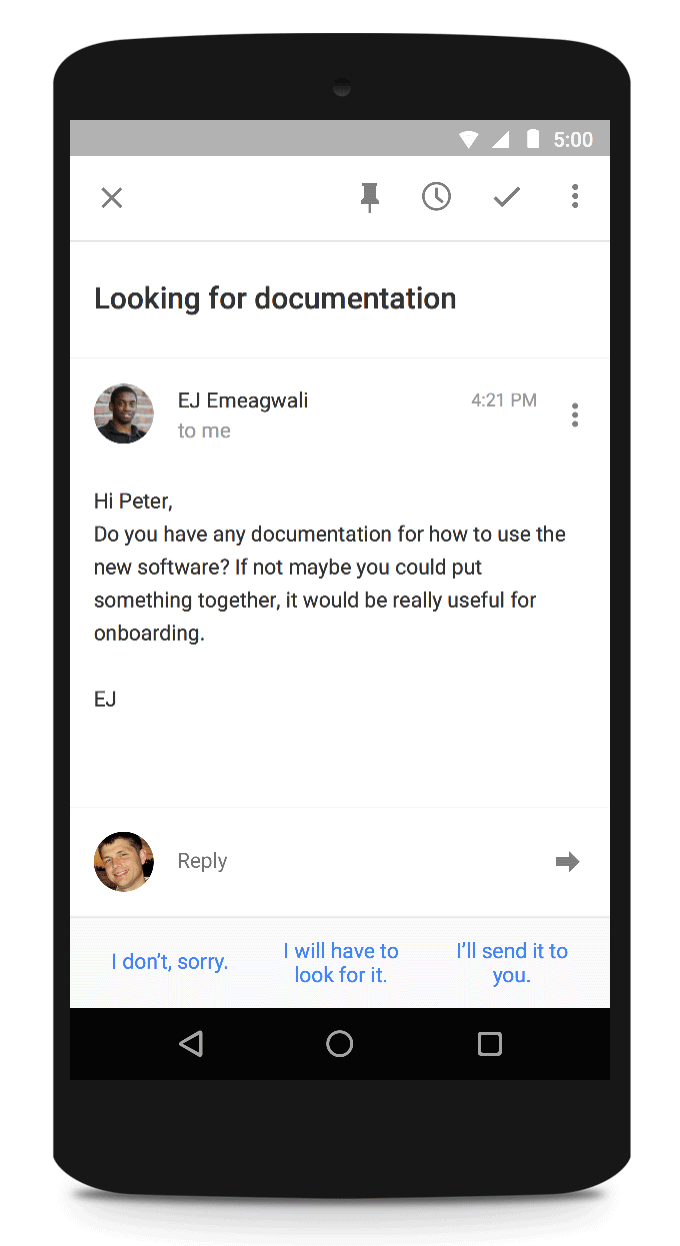
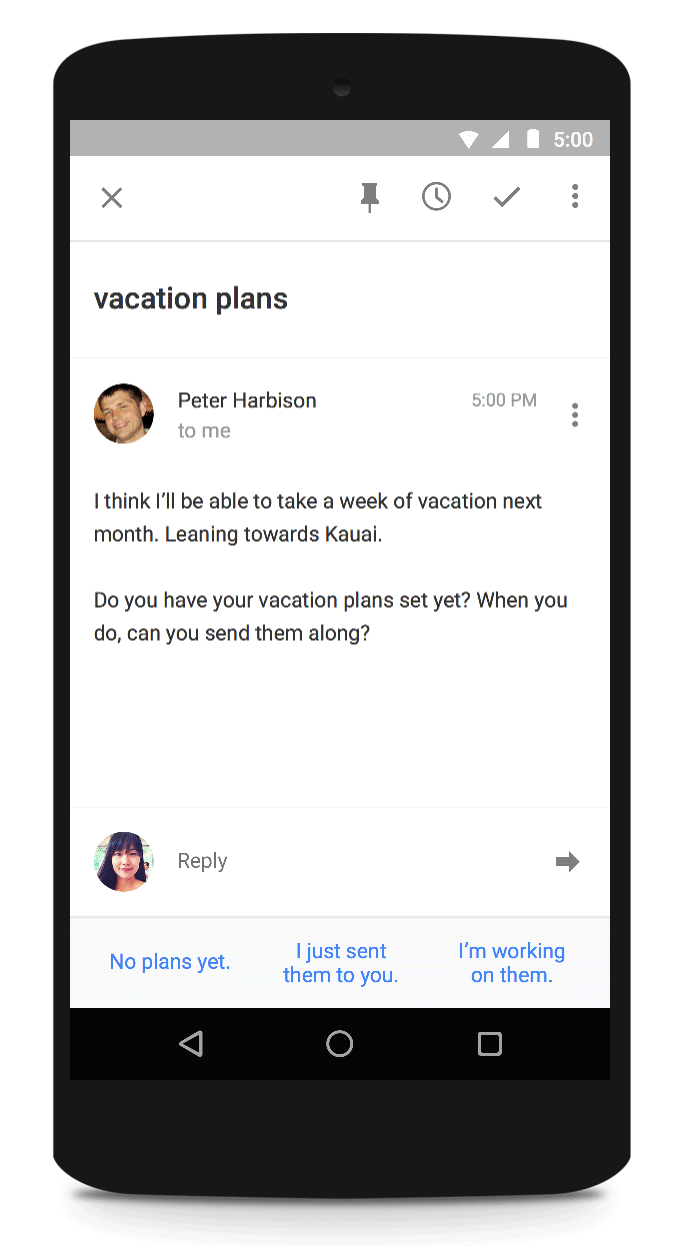
/cdn0.vox-cdn.com/uploads/chorus_asset/file/4178416/nexus-5x-9652.0.jpg)
/cdn0.vox-cdn.com/uploads/chorus_asset/file/4178432/nexus-5x-9593.0.jpg)
/cdn0.vox-cdn.com/uploads/chorus_asset/file/4178434/nexus-5x-9608.0.jpg)
/cdn0.vox-cdn.com/uploads/chorus_asset/file/4178438/nexus-5x-9642.0.jpg)
/cdn0.vox-cdn.com/uploads/chorus_asset/file/4178418/nexus-5x-9557.0.jpg)
/cdn0.vox-cdn.com/uploads/chorus_asset/file/4178424/nexus-5x-9589.0.jpg)
/cdn0.vox-cdn.com/uploads/chorus_asset/file/4178444/nexus-5x-9623.0.jpg)
/cdn0.vox-cdn.com/uploads/chorus_asset/file/4178422/nexus-5x-9649.0.jpg)
/cdn0.vox-cdn.com/uploads/chorus_asset/file/4178268/nexus-6p-9693.0.jpg)
/cdn0.vox-cdn.com/uploads/chorus_asset/file/4178286/nexus-6p-9466.0.jpg)
/cdn0.vox-cdn.com/uploads/chorus_asset/file/4178270/nexus-6p-9683.0.jpg)
/cdn0.vox-cdn.com/uploads/chorus_asset/file/4178290/nexus-6p-9459.0.jpg)
/cdn0.vox-cdn.com/uploads/chorus_asset/file/4178264/nexus-6p-9705.0.jpg)
/cdn0.vox-cdn.com/uploads/chorus_asset/file/4178252/nexus-6p-9748.0.jpg)
/cdn0.vox-cdn.com/uploads/chorus_asset/file/4178470/Burst_Cover_GIF_Action_2353476766778.0.gif)
/cdn0.vox-cdn.com/uploads/chorus_asset/file/4178262/nexus-6p-9713.0.jpg)
/cdn0.vox-cdn.com/uploads/chorus_asset/file/4178278/nexus-6p-9674.0.jpg)
/cdn0.vox-cdn.com/uploads/chorus_asset/file/4178288/nexus-6p-9454.0.jpg)
/cdn0.vox-cdn.com/uploads/chorus_asset/file/4178294/nexus-6p-9444.0.jpg)






